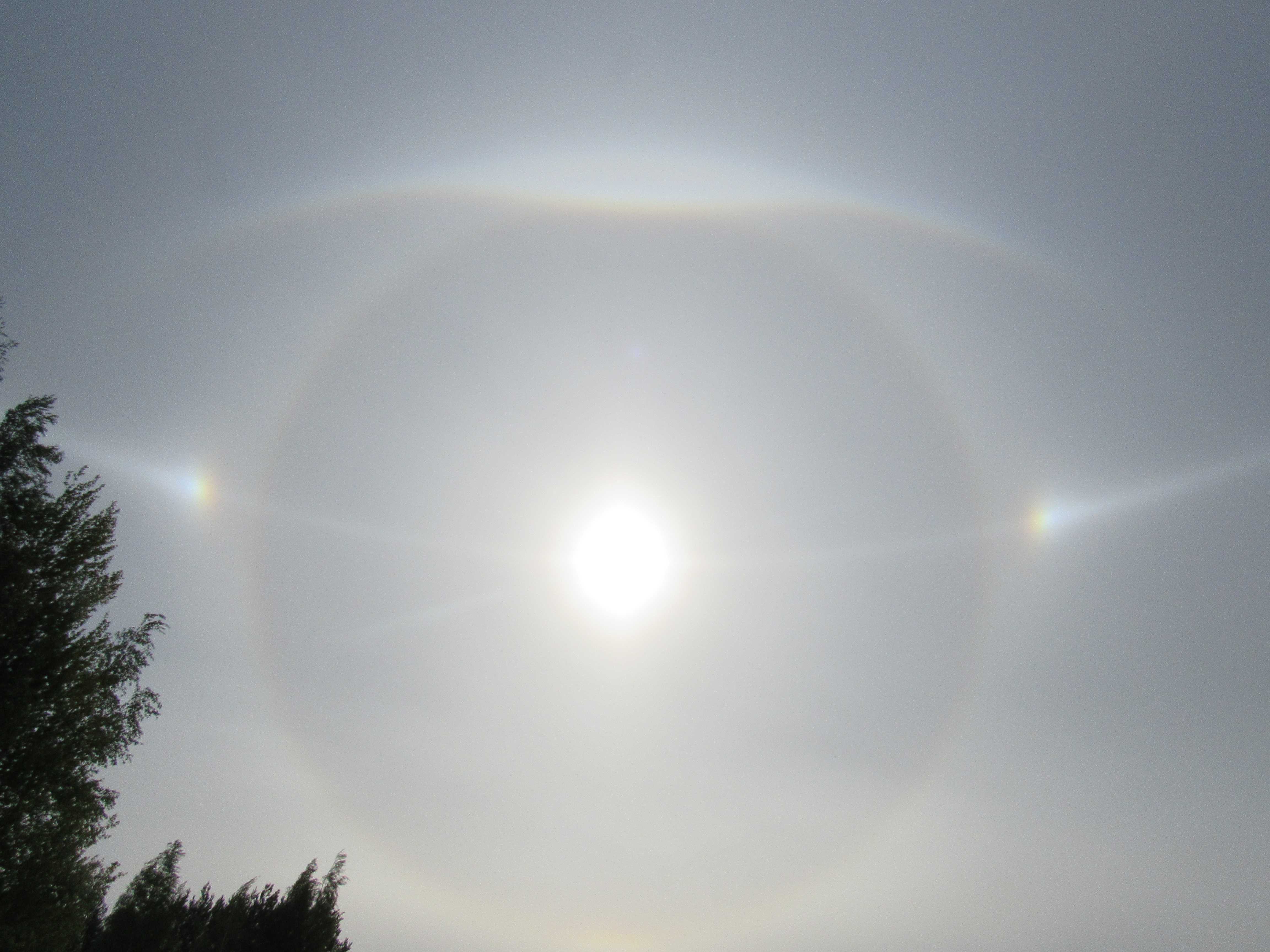CH = 7
(Section 2.8.2.3.7)(a) TECHNICAL SPECIFICATION
Cirrostratus covering the whole sky.
(b) EXPLANATION
(i) Cirrostratus covering the whole sky usually occurs as a light, uniform and nebulous veil showing no distinct details (Cirrostratus nebulosus), or as a white and fibrous veil with more or less clear-cut striations (Cirrostratus fibratus).
(ii) The Cirrostratus veil is sometimes so thin that it is hardly visible and halo phenomena, especially frequent in thin Cirrostratus, provide the only evidence for its presence. The Cirrostratus may also be relatively dense.
(iii) Cirrus at different levels and Cirrocumulus may accompany the Cirrostratus.
(iv) When a veil of Cirrostratus is concealed in places by clouds at a lower level, or when the horizon is dark or hidden partially or totally by haze, smoke, etc., observers shall not report CH = 7 unless they are sure (for instance, from continuous observation) that the Cirrostratus really covers the whole sky. If any doubt exists, the coding should be CH = 8, unless it is known that the veil was invading the sky progressively, in which case, the coding CH = 6 should be used.
(v) If there are gaps or clear intervals in the veil, through which it is possible to distinguish the blue of the sky, the coding should be CH = 8.
(vi) When, by a process of continuous transition, a thin layer of Altostratus translucidus follows upon a complete veil of Cirrostratus, the two together covering the whole sky, the code figure CH = 7 should be used simultaneously with the coding CM = 1 (if no Altocumulus is present) or CM = 7 (if Altocumulus is present).





